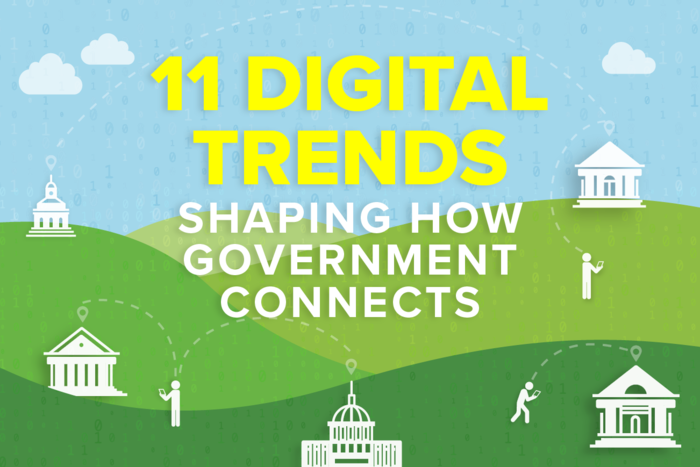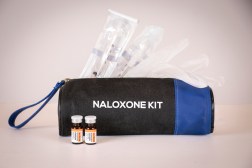11 Digital Trends Shaping How Government Connects


Apps and websites are helping government fight the opioid epidemic
Project spotlight: Kentuckys Stop Overdoses search tool
Though the mainstream medias coverage of opioid epidemic has relented in recent months, the problem itself is far from resolved. Data provided by the Centers for Disease Control and Prevention shows a 17 percent increase in opioid-related deaths between May 2016 and May 2017 compared withthe previous year.
States and municipalities are doing what they can to better understand the issue, in part through data collection and visualization, andalso through new reporting and look-up tools, like one developed by Kentucky that the state government says has supported a 50 percent increase in the statewide dispersal of Naloxone, a drug used to reverse the effects of opioid overdose.
As in many states, opioid deaths have spiked in recent years in Kentucky and the opioid death rate there is now the 10th highest in the nation about 23 people die of opioid addiction in Kentucky out of every 100,000. Thats about 1,000 deaths each year. By supplying the public with a simple tool for locating pharmacies that provide Naloxone and those that provide needle exchange, the state says that it is taking a step toward finding a solution to the problem. Officials report that the websites analytics show that people get the information they are looking for quickly and that the tool is being used consistently.
Similar efforts can be seen in Virginia, where former Gov. Terry McAuliffe created a competition that produced 15 new ideas for opioid addiction apps, including an all-in-one platform that provides addiction resources to addicts, their families, police, and medical providers. Ohio is in the midst of a similar public challenge and New York City launched an app similar to Kentuckys last year called Stop OD NYC that provides both instructions on how and when to administer Naloxone, a map that shows where it can be found, and legal information about the 911 Good Samaritan Law that protects state citizens from being prosecuted for drug possession if they call for help in the event of an overdose.
As intractable as drug addiction is, no government has claimed that these tools will solve the problem, but they are proffered, rather, as yet another support tool in governments expanding reach made possible through new internet and data technologies.

Traditional services and documents are going digital
Project spotlight: Alabamas eID program
A growing number of states are moving not only their document input forms onto mobile devices, but transitioning the documents themselves into digital formats. Governments in Colorado, Idaho, Georgia, North Carolina, Maryland, Wyoming, Washington, D.C., Florida, Arkansas, Virginia, and Alabama are among those to have either already adopted or explore the use of a digital drivers license. The benefits of having a drivers license available on a smartphone include the ability to update information without needing to issue a new card, and improved security and privacy for the card-holder who can, for example, hide his or her address when using the license to prove their age at a bar.
In Alabama, an electronic ID pilot is hoped to do much more. By allowing residents to have their identities pre-verified using a mobile app, the state hopes to cut down on tax fraud. The state is encouraging its residents to sign up for a more trusted identity by offering them the chance to cut in line and get their tax returns first.
Supported by an Obama-era initiative to create a new generation of identity management technologies, the National Institute of Standards and Technology is helping to fund companies like Gemalto and MorphoTrust that are leading pilots in states across the country. The program is rooted in a need for better security and cost-savings, but most of all its a recognition that mobile devices are the future.

Mobility is making technology more accessible to a wider audience
Project spotlight: Washington D.C.s Mobile Tech Lab
Wheeling a mainframe across town to teach the kids about computers wasnt an option in decades past, but today, government is using the small form factor of digital devices to make technology more accessible to those with fewer opportunities to get their hands on a computer at home. Washington, D.C.s Mobile Tech Lab, a 48-foot converted bookmobile loaded with computers and Wi-Fi, is a symbol of the work government is doing to educate and heighten technology accessibility.
The district has set its focus on Wards 5, 7, and 8, bringing the mobile lab to residents to provide help setting up email accounts, signing up for low-cost internet service and receiving other government services or help they may not have been aware of. According to the District, 25 percent of residents are never exposed to the local governments services in addition to supporting the goal of universal access to technology, the lab also provides another outlet for residents to access their services.
Beyond mobile tech labs, simply by offering more services through smartphone apps is proving to be of continual benefit for government. A mobile payment app provided by Georgias Division of Child Services is making it easier for residents to make child support payments and is relieving an operational burden from the government. The state reports that after launching the app in 2016, it saw call volumes decline by 13 percent and payments by credit card rose by 7 percent. The state discovered that more people participate in the system if theres a convenient way to do so.

Mobility is helping to preserve the environment
Project spotlight: California EPAs Environmental Complaint System
Government cant do everything itself, but the good news is that it doesnt have to. There are a lot of people who are willing and ready to help if they can, as evidenced by the California Environmental Protection Agencys Environmental Complaint System. Its a mobile-friendly website that allows residents to report environmental problems and the the agency says its making a big difference.
The system, which the state moved to the cloud and a modern platform in 2016 for 99.9 percent uptime, has received more than 2,000 photos, videos and documents from people reporting issues related to soil, water, and air pollution. The state says the new system also allows easier communication and data sharing across departments and that its modular format allows it to be easily replicated for other use cases if needed.
As with so many mobile services, California is not changing the substance of its mission, but merely lowering the bar for participation by the public. Filling out and mailing a paper form or calling a phone number is too tall an order for some, but users of services like California’s system are showing they are ready to contribute to society in a positive way.






